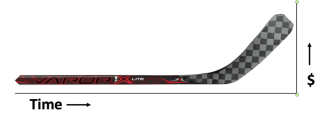A Blog About Understanding The Toyota Production System and Gaining Its Full Benefits, brought to you by "The Toast Guy"


Year End Muda
So much of the technical aspect of Lean relates to time: cycle time, lead-time, takt time, set-up time, and, of course, time associated with waste. The Gilbreths referred to time as “the shadow of motion.” As we all are about to begin another trip around the sun, I’m reminded that time is a wholly manufactured human construct. Symbolic events like the New Year add a social context to time, one that nostalgically recalls “auld lang syne” and at the same time optimistically resolves to be better in the future. Continuous improvement on the other hand tends to reflect on the past as the ‘status quo’ – a baseline to be improved. In that spirit, I’d like to suggest reconsideration of a couple of calendar-based customs that I dealt with in my good old days in manufacturing. Both wreak havoc on productivity and customer service, oddly in the name of productivity and customer service.

Period End Shipping Bogeys. Ask most any operations manager what their number one priority is and they’ll tell you shipping dollars. This is not necessarily the same as schedule attainment; for example, at month’s end, a big dollar order might be cherry-picked for early shipment at the expense of on-time shipment of smaller orders. The practices of heavy month-end overtime and shipping some orders early while others shipped late (we called it ‘dialing for dollars’), in fact, created a raft of problems from excessive labor expense to self-inflicted part shortages. The wave at period end was always followed at the start of the next period by a trough, as we expedited supplier deliveries to recover from our own overproduction. This “hockey stick” shipping pattern occurred at the end of every month, then quarterly with an extra push, and finally with a grand effort at year-end. At my company, sales bonuses were paid on quarterly shipments, creating substantial pressure to do the wrong thing. My teacher, Hajime Oba, once commented that obsession with quarterly earnings was a major inhibitor to gaining the full benefits of TPS. When my company, finally focused on levelizing the periodic peaks, both productivity and service improved dramatically.

Year-end Inventory. When I took part in my first physical inventory, I naively assumed that its main purpose was to assure that perpetual inventory on our ERP system matched the actual count on the shelf. This was my perspective as the manager of our IT department. Years later, after transferring to operations management, I realized that the primary purpose of the physical inventory was to value inventory for taxes. We were more concerned that the aggregate dollar value of the counted inventory was close to the budget. If a number of individual part counts with positive variances (more on hand than on the ERP record) were offset by an equal number of parts with negative variances (less than on the ERP record), we’d be on budget. As for tracking the root causes of inventory inaccuracies, the trails were cold; we just updated the ERP records. Apart from the enormous disruption caused by shutting down production for counting, there is strong evidence that the blitz approach to the physical inventory creates as many counting issues as it corrects. Like all batch processes, the year-end inventory makes problems invisible. After many years, we finally replaced this particular year-end tradition with a smaller batch process: daily cycle counting. This was considered satisfactory for tax purposes and occasionally enabled root cause analysis to improve inventory accuracy. Eventually, as the factory focused on just-in-time delivery, we realized the obvious: that the magnitude of the year-end physical counting was caused by the sheer volume of the inventory itself. In other words, if you buy and make less, then counting is easy. In 1989, when Shigeo Shingo visited our stockroom, he turned to me and said “The inventory should be no higher than your knees, Mr. Materials Manager.” That was about right.
If you are making resolutions for 2023, consider revising these two unpleasant and counter-productive business customs from the good old days. Thanks for reading in 2022 and best wishes for the year to come.
O.L.D.
By the way. Speaking of time…now is a great time to SAVE THE DATE for GBMP’s 19th Annual Northeast L.E.A.N. Conference: coming October 3-4, 2023 to the DCU Center in Worcester MA. Our theme. “It’s About Time”, speaks for itself – sharing both methods and motivation to gain back time lost to waste.
